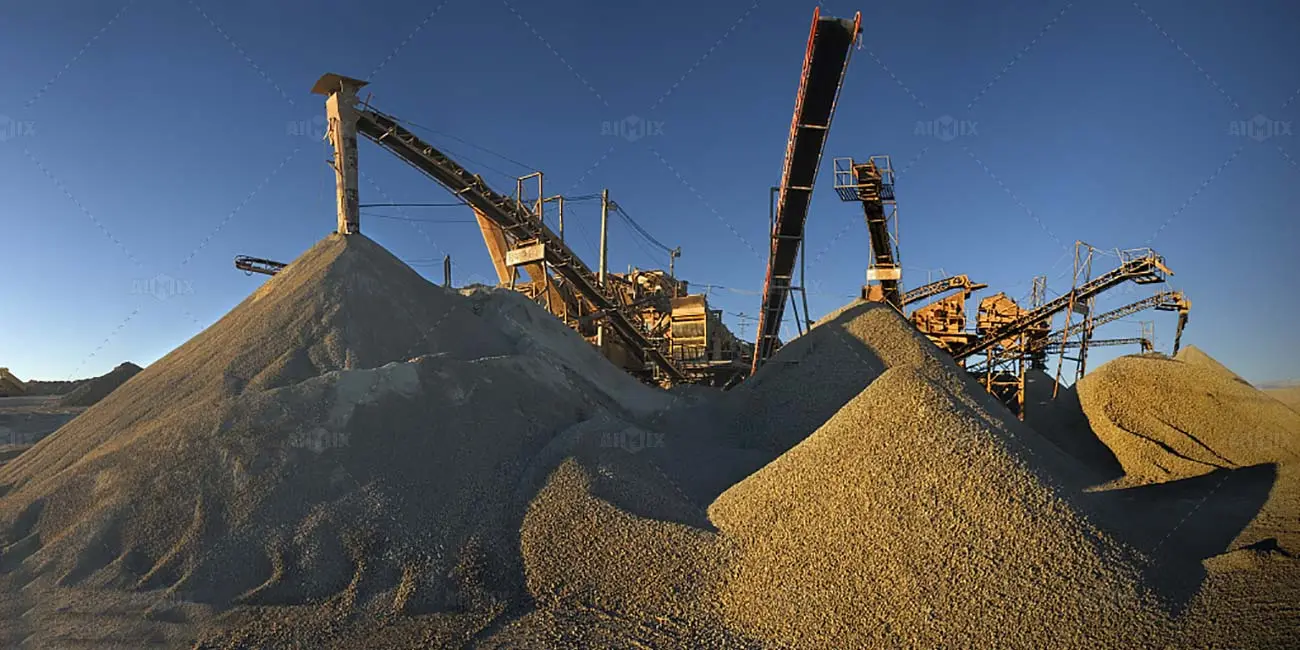Batching plants are vital components in the construction industry, responsible for mixing concrete to precise specifications and ensuring that large-scale projects have a consistent, high-quality material supply. Given the complexity and scale of these operations, ensuring safety, efficiency, and environmental compliance is critical.
Understanding Batching Plants
A batching plant is a facility where various ingredients—such as cement, aggregates, water, and additives—are combined to form concrete. These plants can be stationary or mobile and are designed for both large-scale construction projects and smaller on-site operations. The main components include:
- Aggregate Bins and Storage: Areas where aggregates (sand, gravel, crushed stone) are stored.
- Conveying Systems: Belt conveyors and elevators transport materials to the weighing and mixing areas.
- Weighing and Dosing Systems: Automated systems that measure and dispense exact quantities of each ingredient.
- Mixers: Drum or pan mixers where ingredients are blended to form concrete.
- Discharge Systems: Mechanisms that transfer the mixed concrete to trucks or onto a designated storage area.
Common Hazards in Batching Plant Operations
Batching plants involve several hazards that can impact worker safety and operational efficiency:
- Mechanical Hazards: Moving parts such as conveyors, mixers, and elevators can cause injuries if proper guarding and safety procedures are not in place.
- Dust and Particulate Exposure: Cement and aggregates generate dust, which can lead to respiratory issues if inhaled.
- Chemical Exposure: Handling of additives and cement can cause skin irritation or respiratory problems.
- Slips, Trips, and Falls: Wet surfaces and cluttered work areas increase the risk of falls.
- Electrical Hazards: The integration of automated systems and heavy machinery poses risks related to electrical malfunctions or improper grounding.
Best Practices for Batching Plant Safety
1. Comprehensive Risk Assessment
- Site Evaluation: Before installation and operation, conduct a thorough assessment of the site conditions, identifying potential hazards related to equipment placement, environmental factors, and worker access.
- Process Analysis: Review the batching process to identify critical control points where safety measures are necessary.
2. Engineering Controls
- Guarding and Barriers: Ensure that all moving parts are adequately guarded. Install physical barriers to prevent accidental contact with mechanical components.
- Dust Suppression Systems: Use water sprays, dust collectors, or baghouse filters to minimize airborne dust during material handling.
- Automated Safety Features: Incorporate emergency stop buttons, interlock systems, and alarms to immediately halt operations in case of an unsafe condition.
3. Administrative Controls and Training
- Standard Operating Procedures (SOPs): Develop clear procedures for safe operation, maintenance, and emergency response. Make sure these procedures are accessible and regularly reviewed.
- Worker Training: Conduct comprehensive training programs covering equipment operation, hazard recognition, and the proper use of personal protective equipment (PPE).
- Regular Safety Meetings: Hold routine toolbox talks and safety briefings to address concerns and update staff on any changes to safety protocols.
4. Personal Protective Equipment (PPE)
- Respiratory Protection: Provide dust masks or respirators to protect workers from cement and aggregate dust.
- Eye and Face Protection: Safety goggles or face shields should be worn to protect against flying particles.
- Hearing Protection: In areas with high noise levels, use earplugs or earmuffs to prevent hearing damage.
- Protective Clothing: Ensure workers wear durable clothing, gloves, and safety boots to guard against chemical exposure and physical injuries.
5. Maintenance and Inspections
- Routine Inspections: Conduct daily inspections of key components such as conveyors, mixers, and weighing systems to identify wear or malfunctions.
- Preventive Maintenance: Implement a preventive maintenance schedule to address issues before they lead to equipment failure.
- Documentation: Maintain detailed records of maintenance activities, inspections, and any incidents. This documentation helps ensure compliance and informs continuous improvement efforts.
Environmental and Regulatory Considerations
- Waste Management: Properly handle and dispose of any waste materials, including excess concrete or chemical residues, to minimize environmental impact.
- Regulatory Compliance: Stay current with local and international regulations governing batching plant operations, including OSHA standards and environmental guidelines.
- Energy Efficiency: Explore options for reducing energy consumption, such as energy-efficient motors and automation systems, which can also contribute to a safer and more sustainable operation.
Conclusion
Batching plants are critical to the production of high-quality concrete, but they come with a range of safety and operational challenges. By conducting comprehensive risk assessments, implementing robust engineering and administrative controls, ensuring proper training and PPE use, and maintaining rigorous maintenance protocols, companies can create a safer, more efficient batching plant environment.
Emphasizing safety not only protects workers and reduces downtime but also enhances the overall quality and sustainability of concrete production. A proactive approach to batching plant operations is key to long-term success in the competitive construction industry.
Discover more from HSEProHub
Subscribe to get the latest posts sent to your email.



